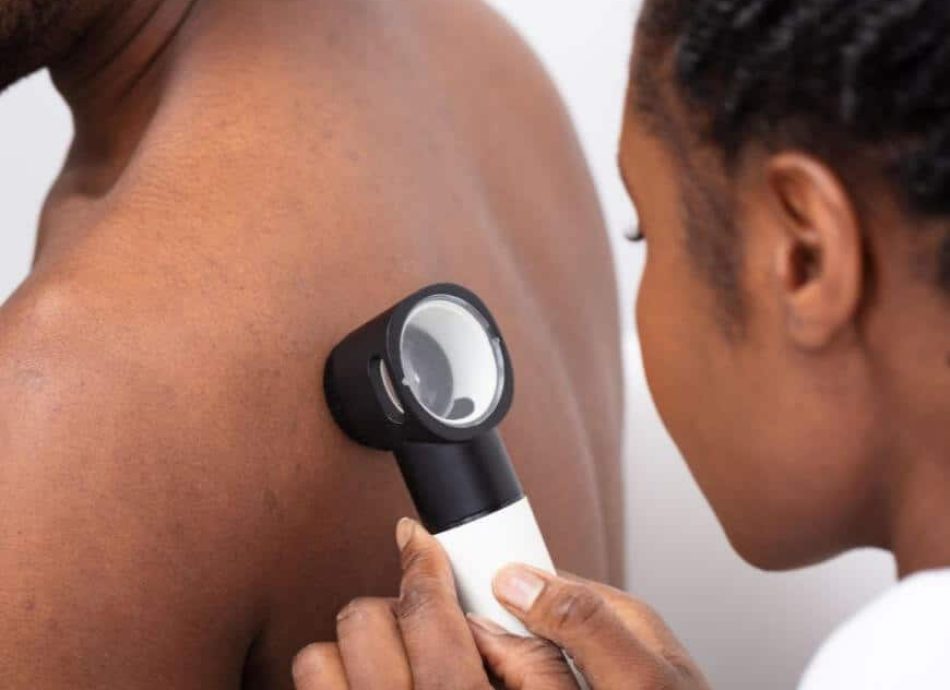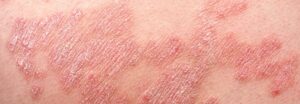Chemical Peel
Home » Treatments » Chemical Peel
Award winning dermatology service, with over 20 years of experience
Short waiting lists, on some occasions offering same week appointments
Safe environment, in Care Quality Commission approved facilities
Chemical peel treatment
Chemical peels involve applying an acid-based formula to the skin to keep it soft, smooth, and supple. Chemical peels can be used on most areas of the body, but the most common use is to improve the appearance of the skin on the face or on the backs of the hands. A chemical solution is applied to the surface of the skin to carefully remove the outer layers. The amount of skin removed will depend on the type of chemical used, the strength of the product and how long it is left on the skin.
HOW DO CHEMICAL PEELS WORK?
We are able to treat a variety of skin complaints by applying a chemical solution which causes the skin to gently peel off, making way for new, healthy skin to shine through:
- Dull, ageing skin
- Sun damage
- Acne and oily skin
- Acne scars
- Melasma and pigmentation
- Fine lines and wrinkles
- Sun/age spots and freckles
- Uneven skin, enlarged pores and blackheads
Our team of experienced medical skin experts, led by our Consultant Dermatologist, will advise on which type of chemical peel would benefit you most, as well as how many peels you would require, which is dependent upon the condition you are being treated for.
Chemical peels can be classified as either superficial peels or medium depth peels depending on the chemical solution applied to the skin surface. They both remove the outer layers of the skin but do so to variable depths.
WHAT ARE THE DIFFERENT TYPES OF CHEMICAL PEEL?
SUPERFICIAL CHEMICAL PEELS
Superficial chemical peels are performed by our qualified beauty therapists. They are helpful in reducing oiliness, unblocking pores, reducing blackheads, and freshening dull, sun-damaged skin. Typically, a series of at least three to six superficial peels are needed to treat ageing skin and to treat acne scars. Most people experience mild facial redness and occasional swelling, but this usually fades and disappears within 48 hours.
MEDIUM DEPTH CHEMICAL PEELS
Medium depth chemical peels are performed by our qualified medical skin specialists. They are effective in helping to reduce the appearance of acne scars, age spots, pigmentation, and superficial fine lines and wrinkles. For deeper scars and more pronounced lines and wrinkles more than one peel may be required. Medium peels typically result in intense redness and swelling, which can take between five and ten days to calm down and disappear.
DEEP CHEMICAL PEEL
Deep chemical peels offer an intense exfoliation with results that last for years. Deep peels are an aggressive skin resurfacing technique that improves the appearance of the skin. A solution is applied to the skin which causes the treated area to exfoliate and literally “peel off”. Typically, the deeper the peel, the more dramatic the results, but they are also associated with longer recovery periods and adverse side effects.
FREQUENTLY ASKED QUESTIONS
HOW CAN I LOOK AFTER MY SKIN AFTER A CHEMICAL PEEL?
Following your chemical peel it is important to not pull or pick at your skin as it can interrupt the skins natural healing cycle and you are more likely to get an infection. Be gentle with your skin and treat it with care, using sensitive products on your skin. Continue to moisturise your skin as normal, ensuring you are using an SPF sun protection daily and avoiding direct sun light where possible. It is also important to drink lots of water and stay hydrated.
HOW LONG DOES IT TAKE TO HEAL AFTER A CHEMICAL PEEL?
Treated areas will take around seven to 14 days to heal following a medium depth chemical peel. Deeper chemical peels may take slightly longer.
CAN ANYONE HAVE A CHEMICAL PEEL?
Chemical Peels aren’t recommended for those who have psoriasis, eczema, dermatitis, rosacea, broken skin, sunburn or active cold sores. During your consultation with a therapist at Stratum Dermatology Clinics, your skin will be assessed and treatment options discussed with you.
WHO WILL CARRY OUT THE CHEMICAL PEEL?
At Stratum Dermatology Clinics, your chemical peel will be carried out by a fully qualified and experienced skin therapist.
HOW MANY CHEMICAL PEELS WILL I NEED?
The amount of chemical peels required to see results depends on the condition you are treating and the type of skin you have. Some improvement will be seen after each peel but it is often recommended to have a series of six peels to see the full desired effect. During your consultation at Stratum Dermatology Clinics, the length of course required will be discussed with you.
REQUEST A CALL BACK
Please fill in this form and one of our team will give you a call back to arrange a consultation with one of our expert dermatologists.

HEAR FROM OUR PATIENTS
WHY HAVE A CHEMICAL PEEL AT STRAtUM DERMATOLOGY CLINICS?
A chemical peel is a great treatment to improve the appearance of the skin and here at Stratum Dermatology Clinics, we know how important this is to your skin health and confidence. When having aesthetic treatments, it is vital that the person conducting the treatment is both qualified and experienced, as well as the facilities you are having the treatment in are clean and safe. Whether you are looking for a chemical peel in London, in Oxford or in Cheltenham – by choosing to have a chemical peel at Stratum Dermatology Clinics, you can be sure of all of the above.
All Stratum Dermatology Clinics are regulated by the Care Quality Commission, are part of the British Association of Dermatologists and are top rated by patients on Doctify. Both Stratum Dermatology Clinics and the consultants who work here are recognised by the main healthcare insurance providers.
OXFORD
Stratum Clinics Oxford
Unit 3, Origin Place
Wootton Science Park
Besselsleigh Road
Wootton
Abingdon OX13 6FD
0800 048 9230
WIMBLEDON AND RAYNES PARK
Stratum Clinics Wimbledon & Raynes Park
Raynes Park Health Centre
1 Lambton Road
Wimbledon
SW20 0LW
latest INSIGHTS AND ADVICE

Guide to Fall Skin Conditions
Autumn, with all its stunning colours, also brings some challenges for our skin. As the air gets cooler and the leaves turn vibrant shades, it’s a reminder that we’re steadily approaching winter. Keeping your skin glowing and healthy during this transition from summer to the

Eczema Awareness Month – Complete Guide on Eczema
October is Eczema Awareness Month. For individuals living with eczema, you will be all too familiar with the trials of handling this skin complaint. It’s our mission throughout October and beyond to educate, support and empower you by delivering invaluable insights on its origin, available

Understanding Varicose Veins: Symptoms, Treatments and Prevention
Varicose Disease Awareness Month focuses on raising awareness about varicose veins, a common but often ignored condition affecting millions globally. This September, we’re highlighting the importance of early detection, available treatments and lifestyle changes to effectively manage varicose veins. By increasing awareness, we aim to






